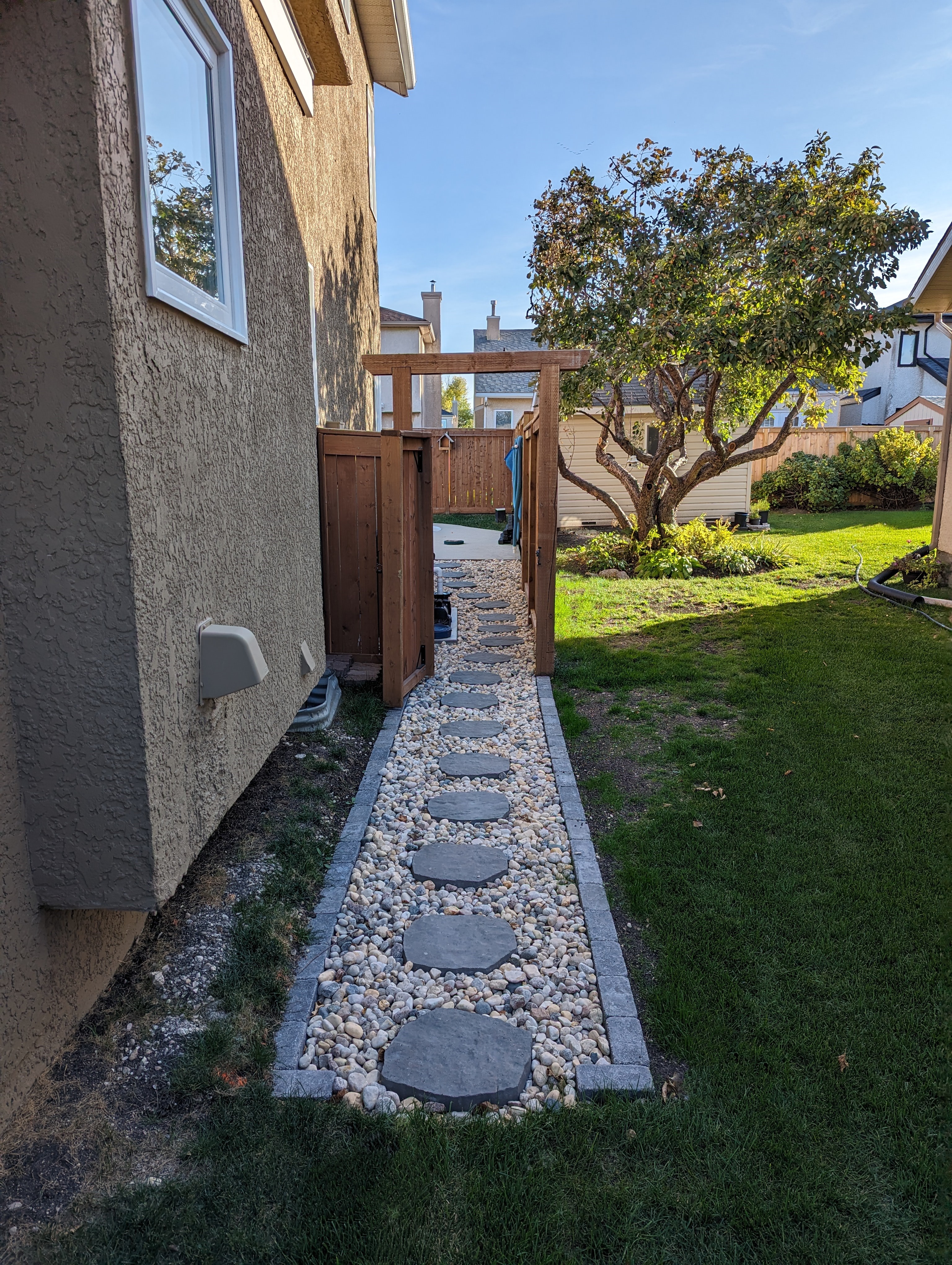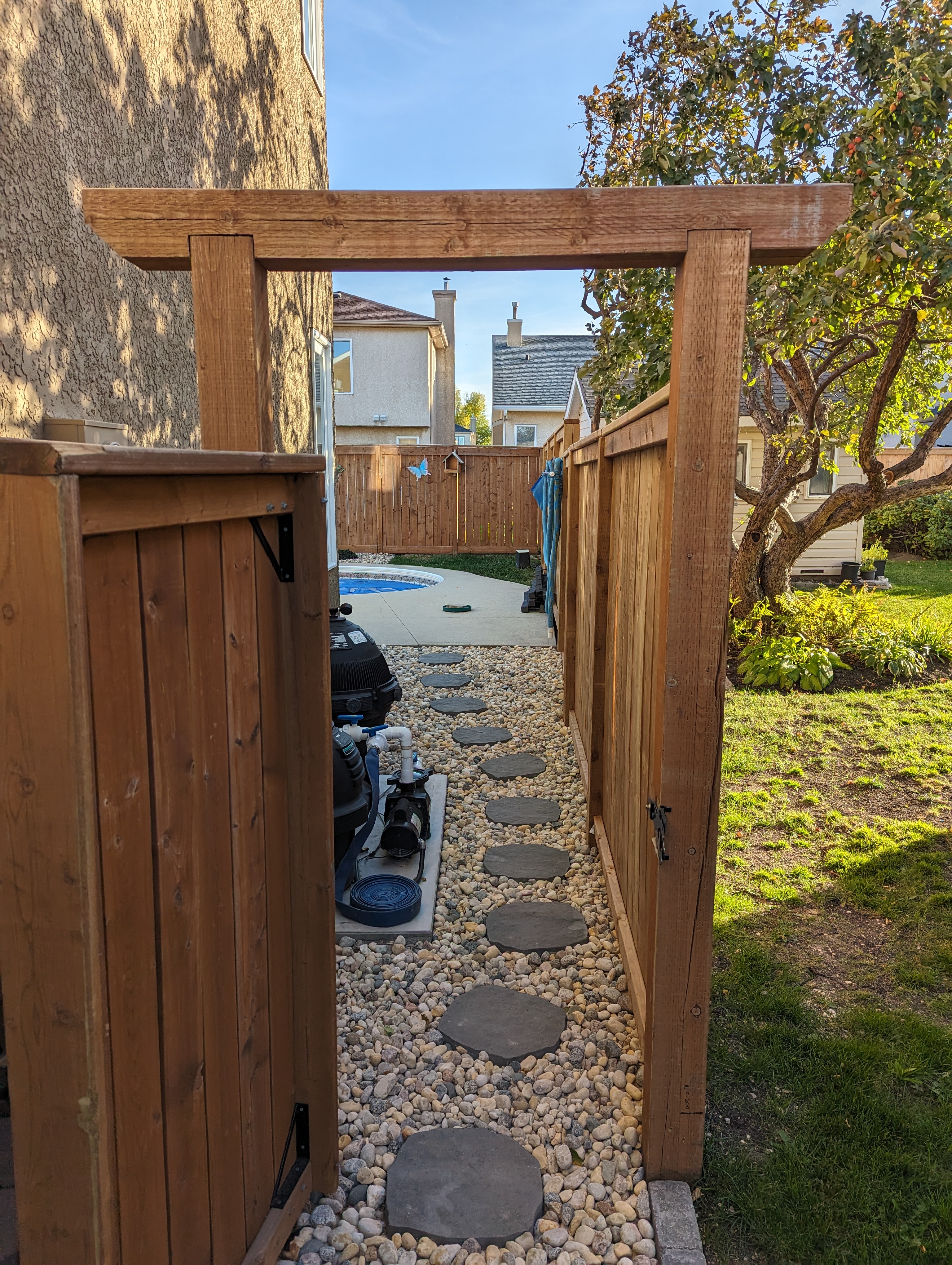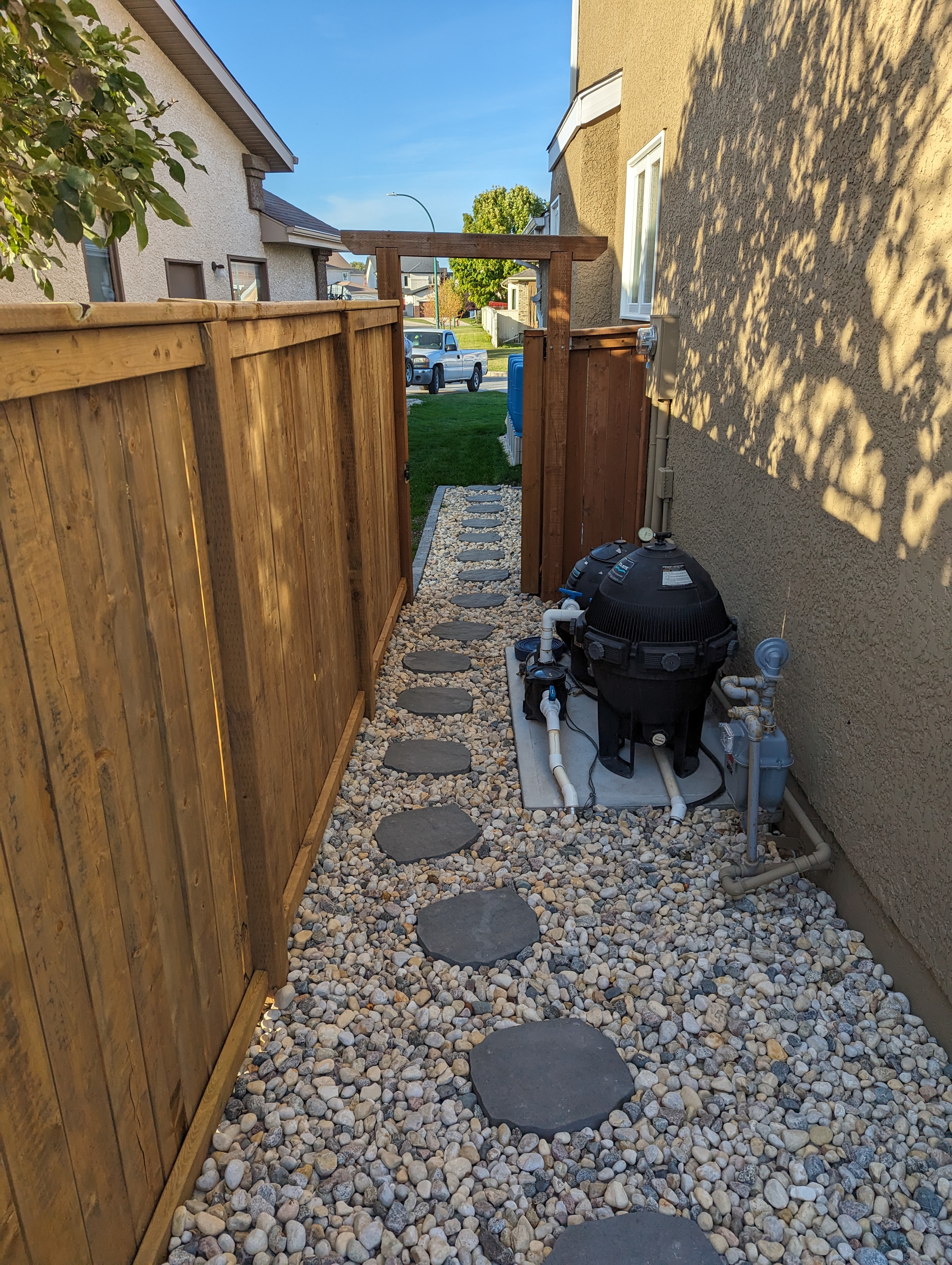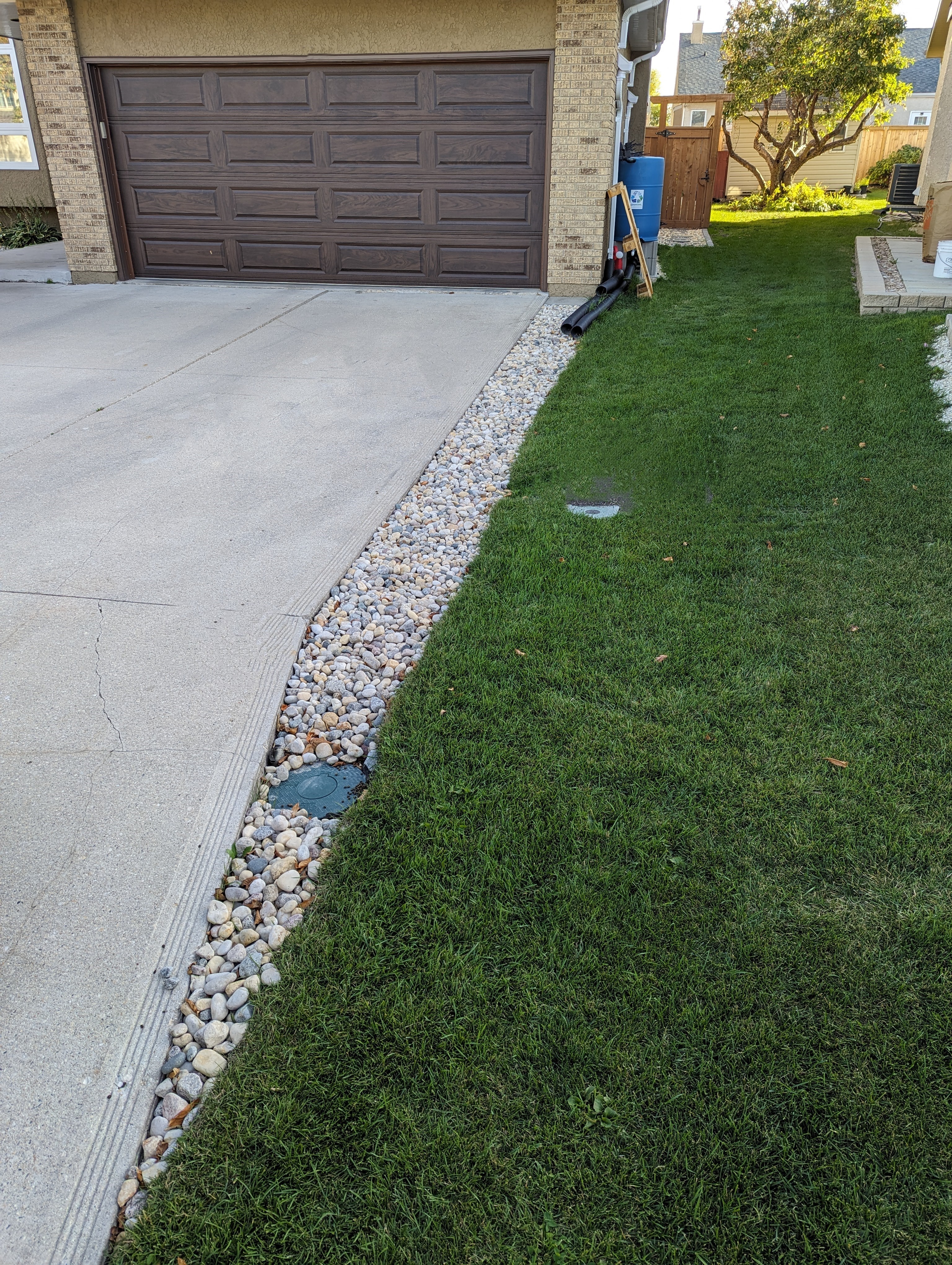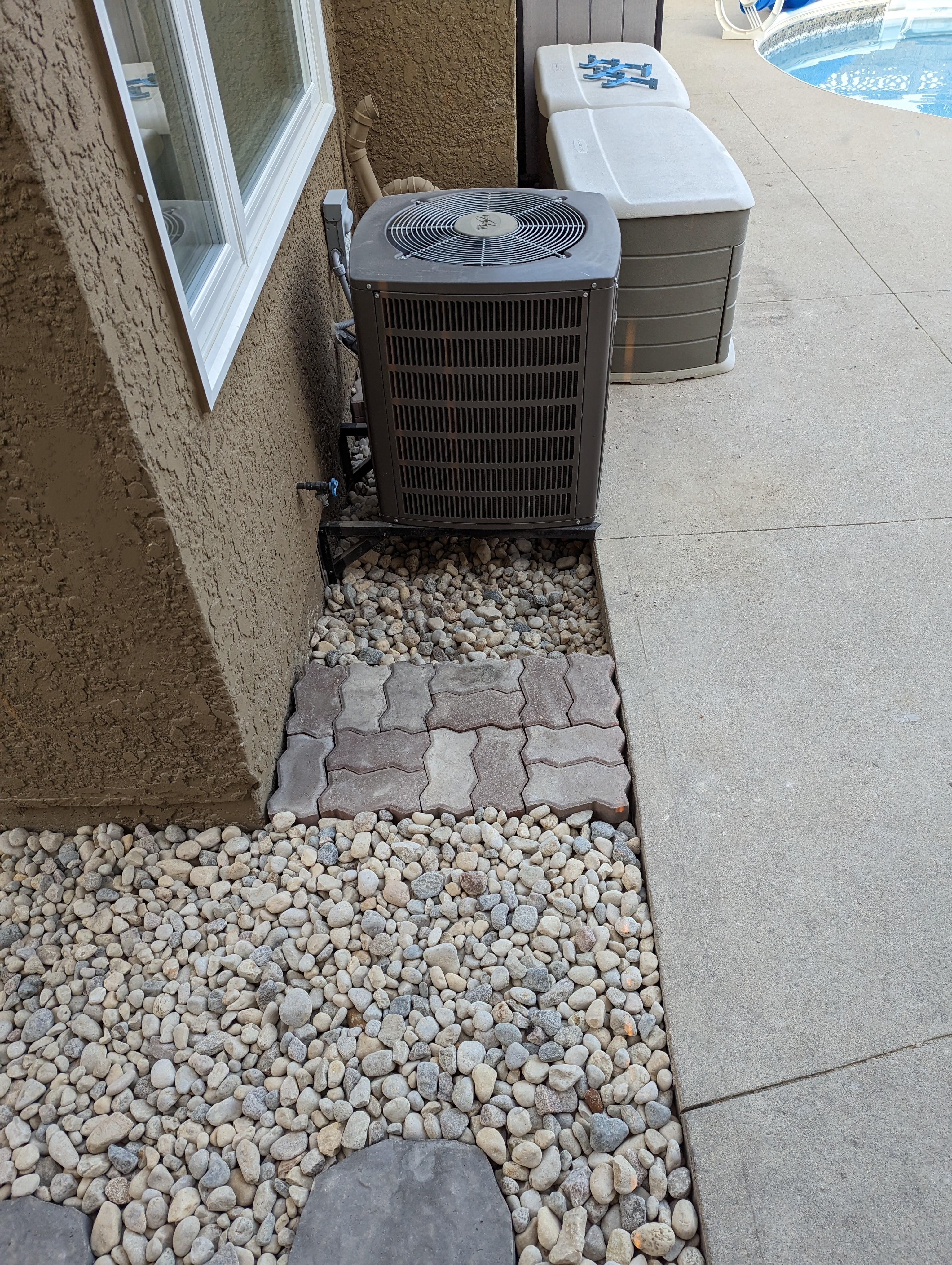Project: French Drain
A well-designed drainage system is the unsung hero of every property.
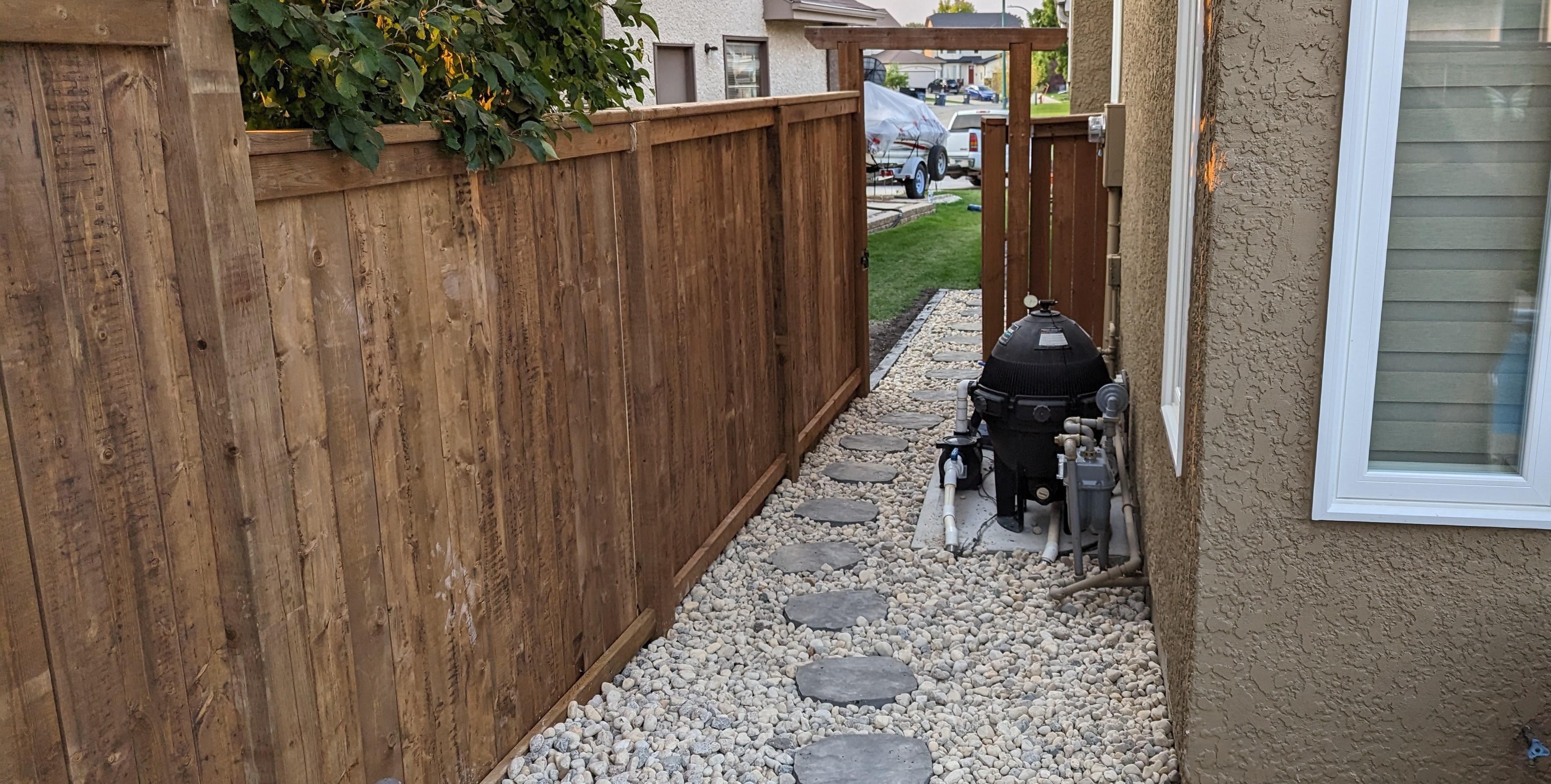
This project marked one-third of an ambitious home improvement trifecta, which also included a fence and pathway overhaul. At its core, the mission was clear: to effectively redirect pooling water away from problem areas around the house. Specifically, the challenge was two-fold - addressing water accumulation beneath the air conditioner and preventing further basement leaks during heavy rains.
The idea to install a French drain came after grappling with water issues for years. Past attempts involved pumping water from beneath the air conditioner and patching up cracks with sealant. However, heavy rainfall continued to pose problems. The solution, proposed to us by experts, sparked my interest. I had already embarked on a project to revamp the side of the house, tearing up the existing path and enhancing the landscaping. Instead of outsourcing, I convinced my parents to entrust the entire side project to me.
Extensive research and meticulous planning formed the bedrock of this endeavor. My proposal entailed installing a French drain beneath the new pathway I was constructing, extending it beyond the leak-prone area. The innovative twist lay in the choice of path material - river rock, which doubled as an open French drain, ensuring efficient water drainage. The drain discharged next to our driveway, strategically positioned lower than the lowest point of the French drain near the leakage, allowing rainwater to naturally permeate the soil.
The pre-existing deteriorating fence on that side of the house presented a golden opportunity for an upgrade, conveniently coinciding with the path and French drain project. Consequently, the fencing plan was included in the proposal.



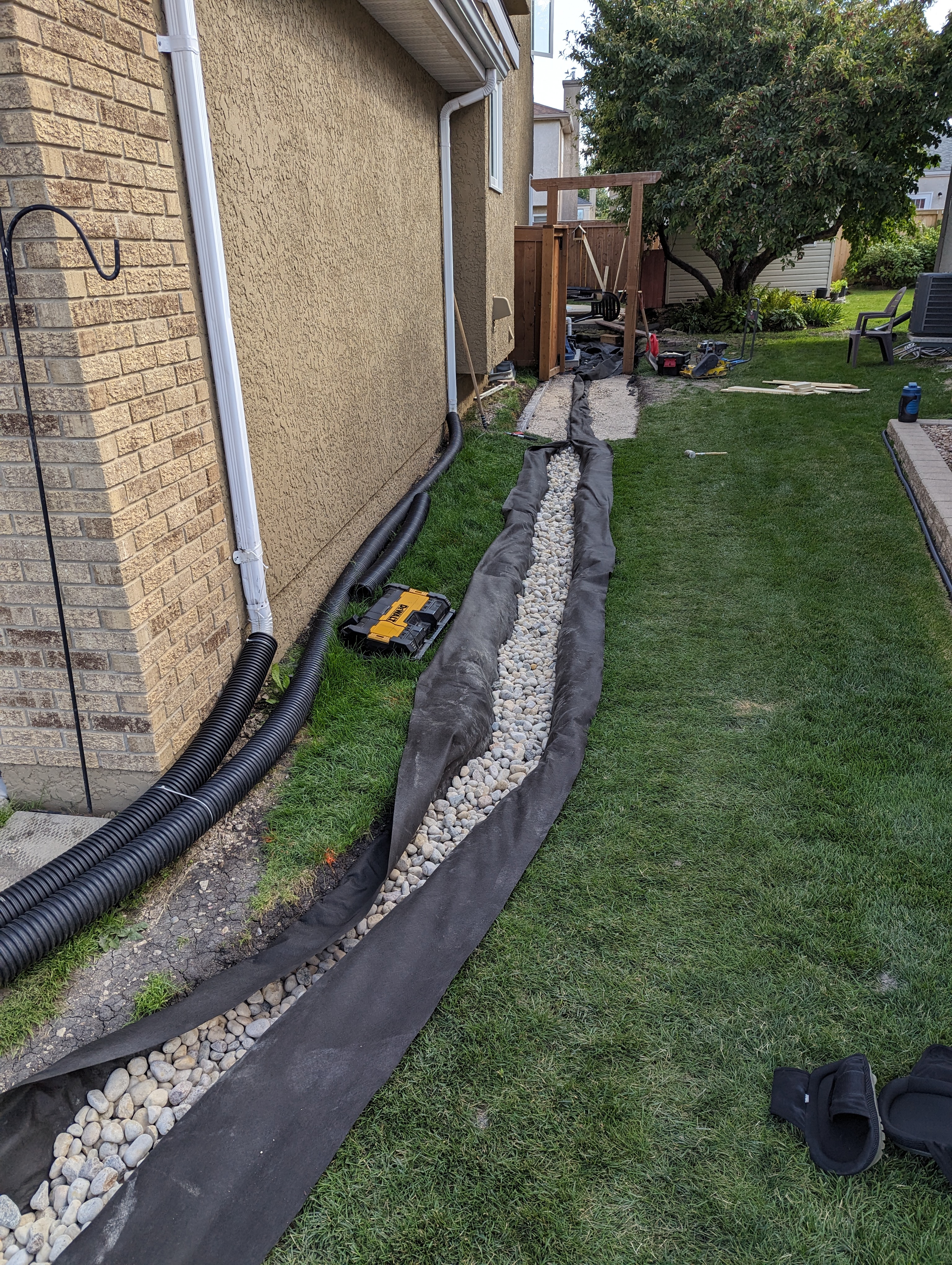
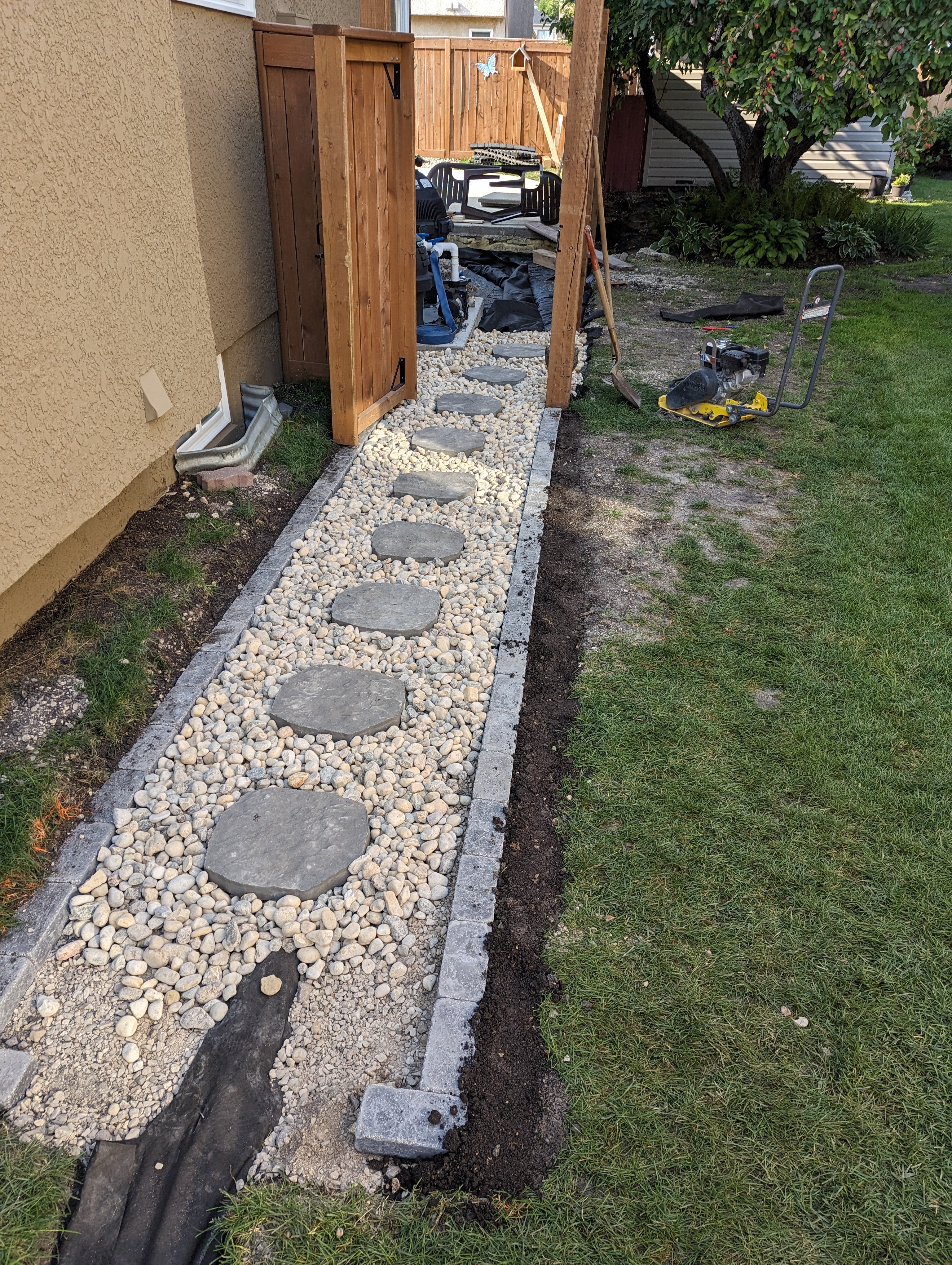
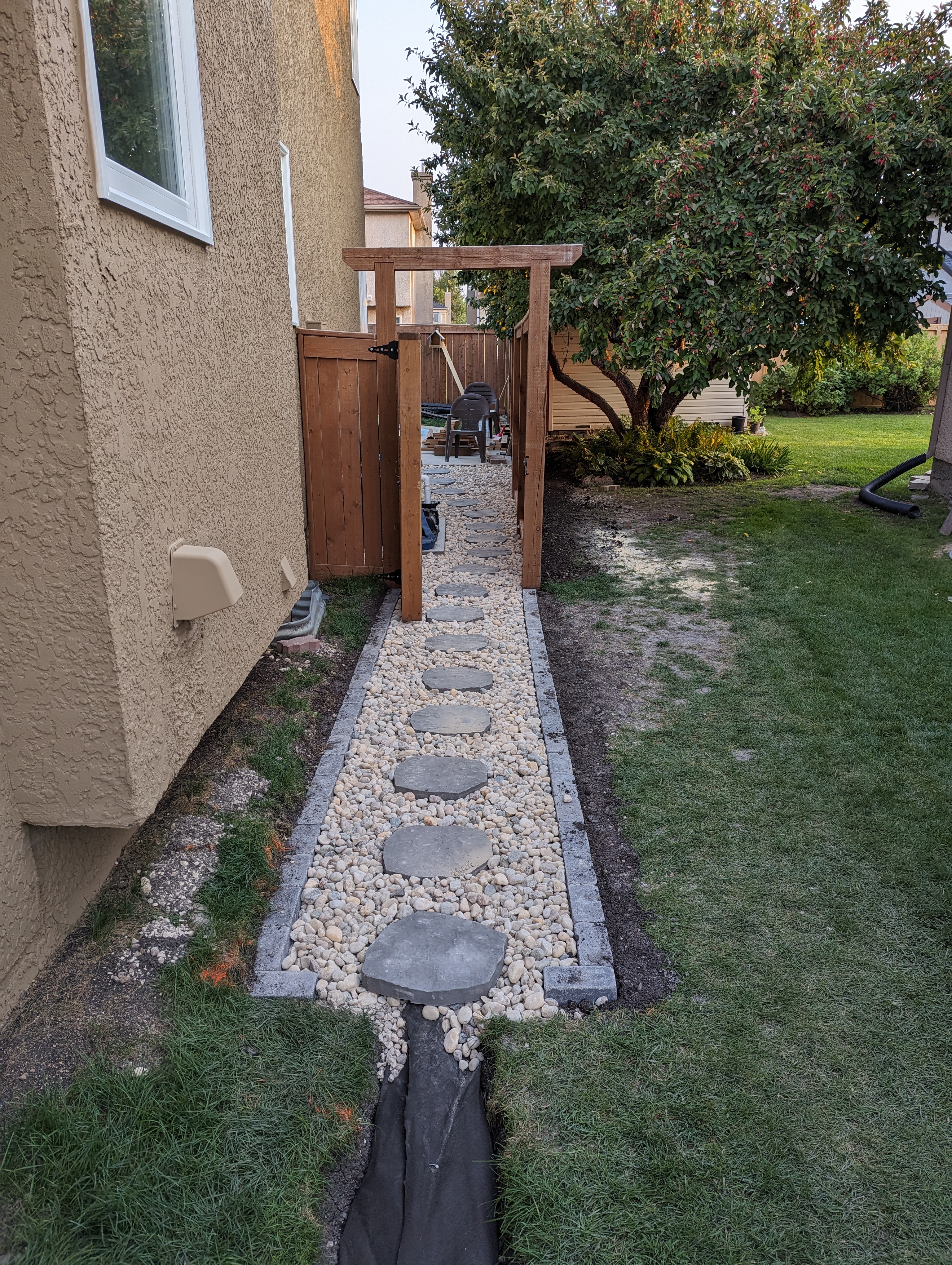
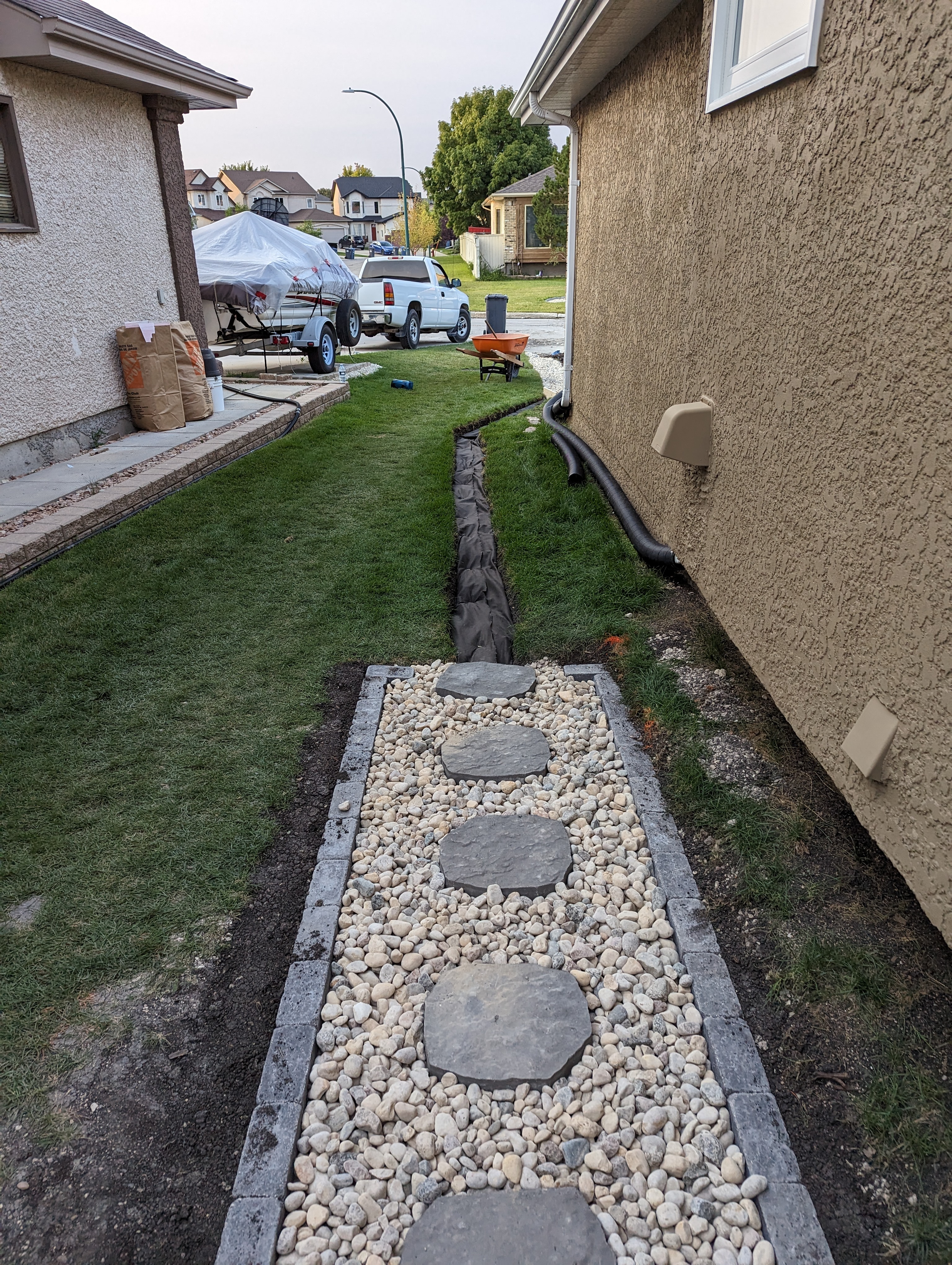
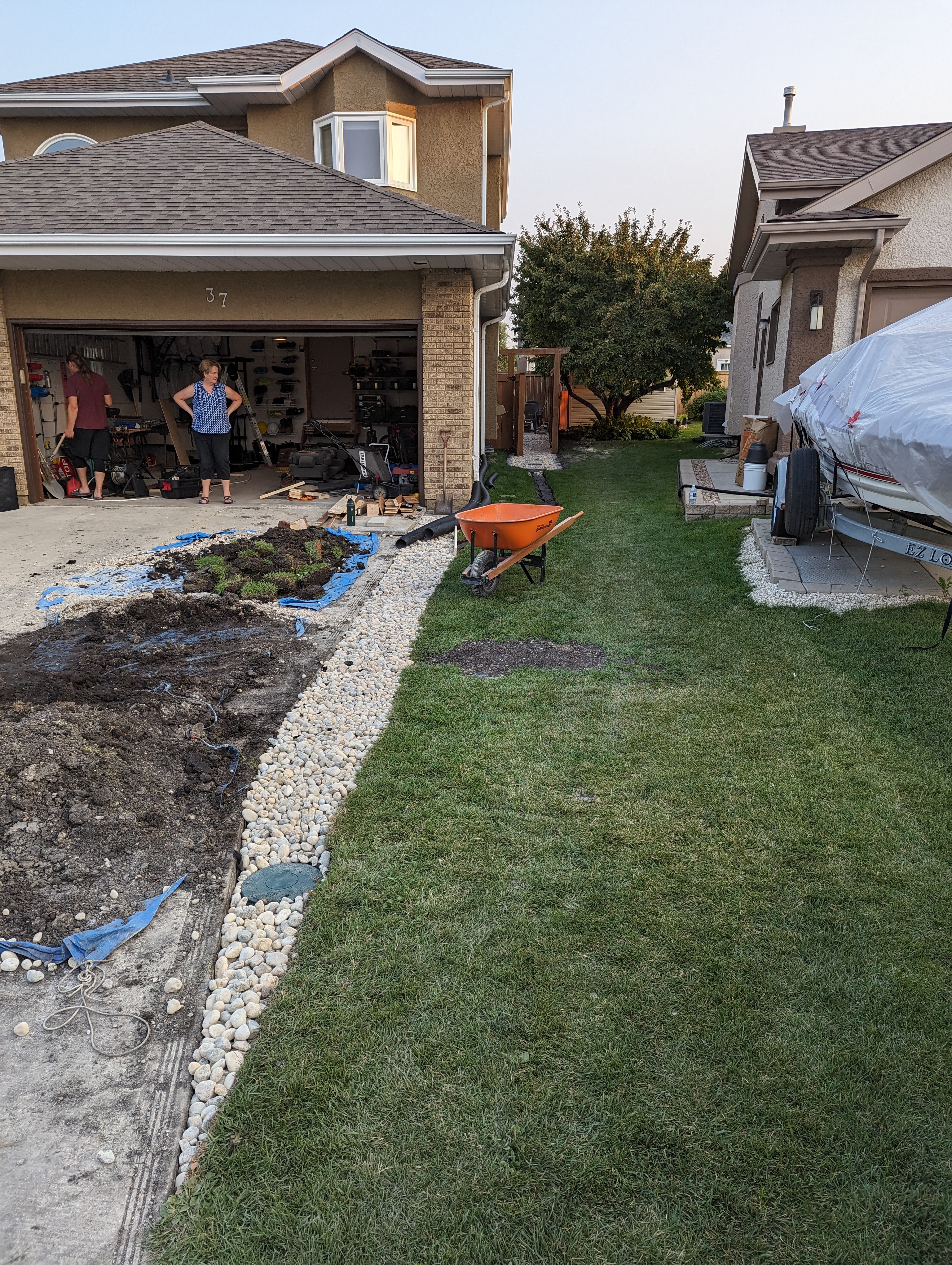
Methodology
- Elevation assessments using a rod and level to determine existing topography.
- AutoCAD software design for the pathway and French drain.
- Excavation of the path area.
- Digging the trench for the French drain, extending it to the discharge point.
- Fence removal.
- Fence post hole digging with an auger.
- Fence post placement with packed limestone.
- Landscaping fabric laying for the pathway.
- Pathway limestone installation.
- Geotextile fabric placement for the French drain.
- Pipe installation in the trench.
- Careful stone and limestone placement along the pathway, ensuring pipe flatness.
- Limestone compaction for the pathway.
- Brickwork, river rock, and stone installation to complete the pathway.
- Brick wall installation to support the area near the air conditioner.
- Discharge installation with a small basin to facilitate natural water absorption into the soil.
With my parents' approval of the AutoCAD design, I embarked on the challenging journey. All necessary materials were sourced from the French Drain Man website, chosen for their high-quality, freeze-resistant perforated pipe.
Time was of the essence, as I had to complete the fence, French drain, and path within two weeks before a scheduled vacation. Balancing a full-time surveyor job with this project was demanding. Support from friends was enlisted to help dismantle the old fence, dig the trench (after proper checks), and transport materials to the dump.
I meticulously dug the trench, underlaid the path section with limestone to prevent ground seepage, lined the entire path with landscaping fabric, and ensured the French drain was protected with geotextile fabric. The ingenious combination of river rock and limestone facilitated a stable French drain bed, a concept I hadn't found in my extensive research but believed could work.
Completing the fence, French drain, and path consumed the entire two weeks, not without obstacles. Properly coordinating help proved challenging, and I had to adapt quickly when cancellations occurred. The labor-intensive nature of the project, especially hole digging, reinforced the need for a crew and machinery for future endeavors. Achieving accurate elevations was another demanding task, where a friend and I used a rod and level to maintain precision.
Months after the French drain installation and following several heavy rainfalls, it has proven effective. The system efficiently redirects water from under the air conditioner and along the side of the house, discharging it towards the front yard or onto the driveway when necessary. The updated fence and pathway have garnered admiration from neighbors and guests alike.
This project has been a profound learning experience. I've gained a comprehensive understanding of French drains, fence installation, and landscape grading, setting a strong foundation for future construction and home improvement projects. Promptly setting fence posts and managing teams efficiently have emerged as crucial lessons. Above all, I've learned to have confidence in my innovative ideas, understanding that belief in one's concepts is essential for progress. These lessons have equipped me with knowledge and determination for future ventures, potentially leading me into the realm of energy-efficient home construction.
While no immediate future plans are in place, this project has equipped me with invaluable experience for future home construction endeavors, potentially venturing into energy-efficient home building.
